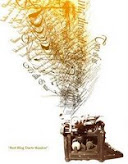A thin layer of plaster was spread over the wall, polished, and smoothed. An apprentice then marked the wall with a red grid pattern and copied the image from a piece of papyrus, carefully keeping the same proportion. At this point, the wall was ready for carving. The sculptor used a large, wooden mallet and a copper or bronze chisel to make the carving.
There were two types of reliefs: raised reliefs and sunken reliefs. When creating a raised relief, the sculptor chiseled away the parts of the stone around the image. This made the image stand out, like the one shown below.
 To create a sunken relief, the sculpture carved away the image, leaving the background higher than the picture. An example is shown below.
To create a sunken relief, the sculpture carved away the image, leaving the background higher than the picture. An example is shown below. Egyptians often combined the two styles when decorating tombs and monuments, as in the example below. The pharoahs were done in raised relief and the hieroglyphics around them were done in sunken relief.
Egyptians often combined the two styles when decorating tombs and monuments, as in the example below. The pharoahs were done in raised relief and the hieroglyphics around them were done in sunken relief. When the carving was complete, the wall was whitewashed before the natural, Egyptian paints were added.
When the carving was complete, the wall was whitewashed before the natural, Egyptian paints were added. Stay tuned for more about Egyptian Art.
Stay tuned for more about Egyptian Art.
EDITED TO ADD: Part 3- Sculpture, Part 4- Amarna Art, Part 5- Fayum Portaits








4 comments:
Thanks for the information
this year my art class created raised reliefs, very hard work indeed.
It certainly takes patience. And if you mess up you just have to work with it or start over. I've tried a few times but never actually finished one. How did yours turn out?
thanks
Post a Comment